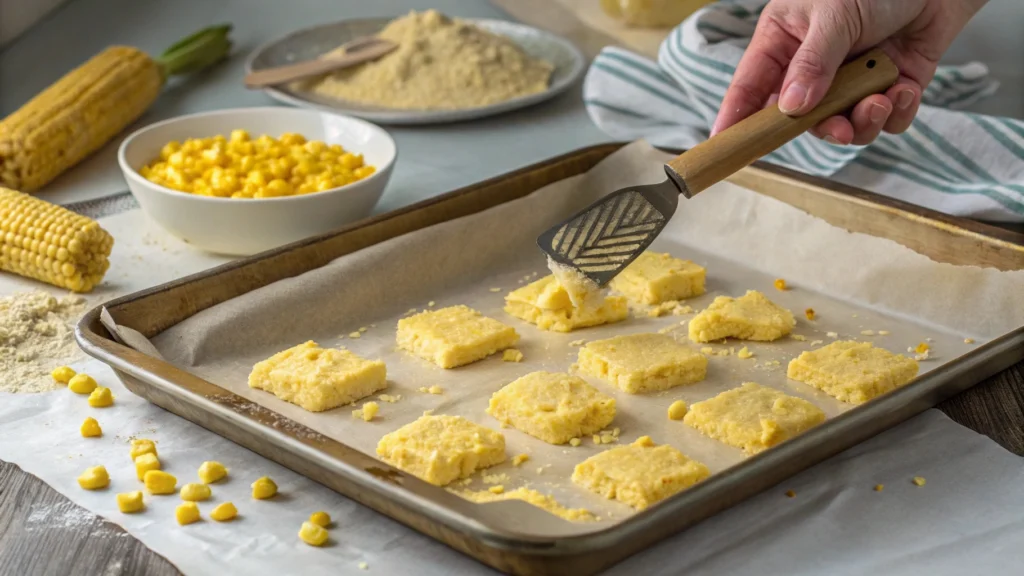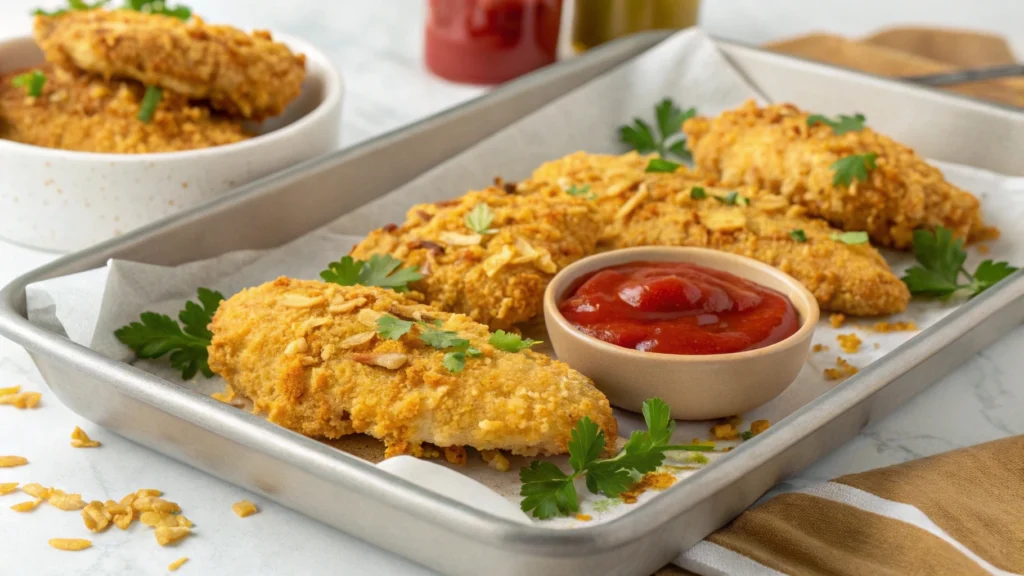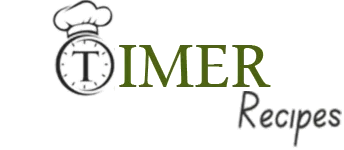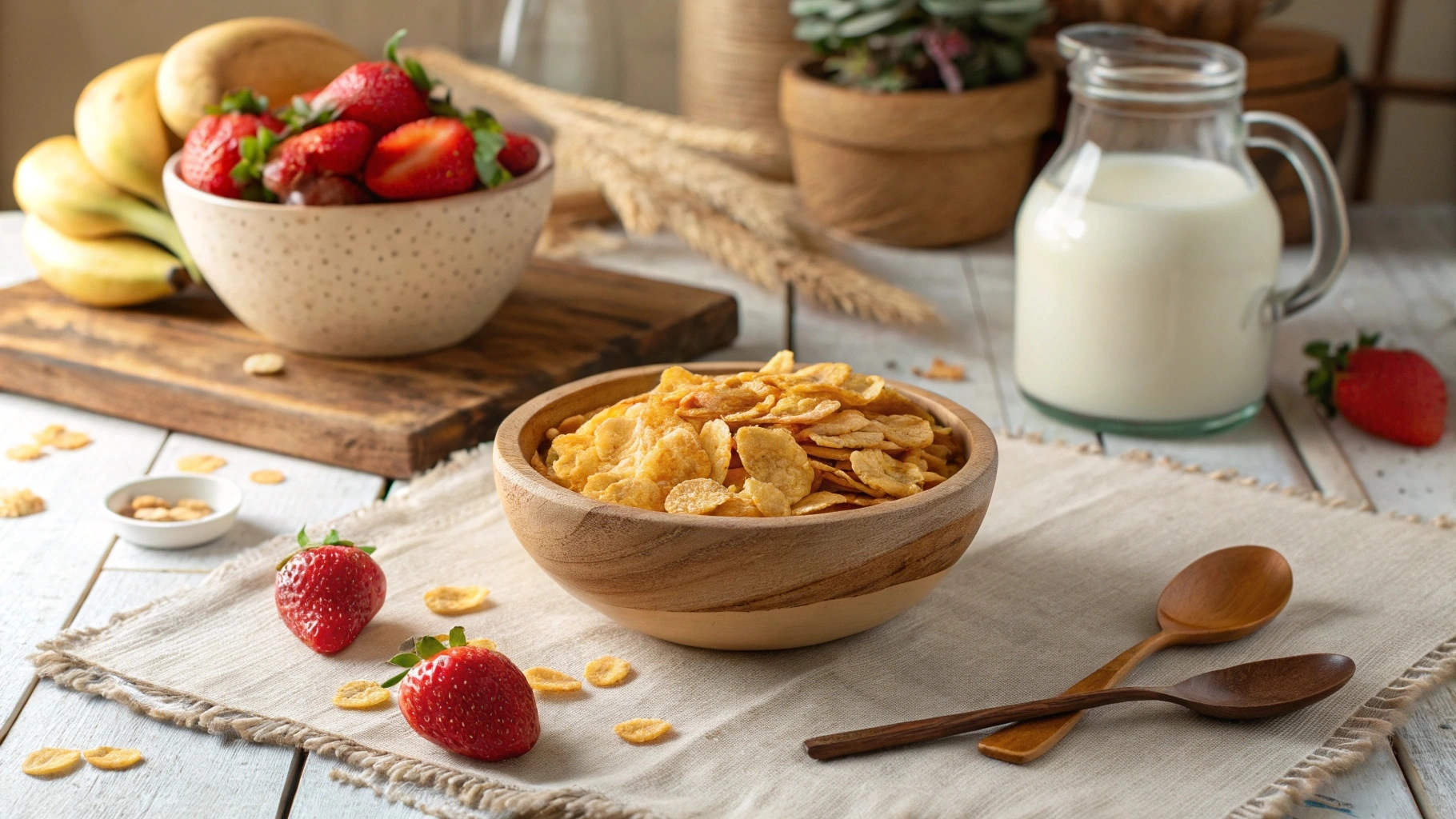Introduction
Corn flakes are a beloved breakfast staple that has graced tables worldwide for over a century. Crisp, light, and versatile, they pair perfectly with milk, fruits, or yogurt to create a nourishing start to the day. But have you ever considered making your own corn flakes at home? Not only can you customize the flavor and sweetness to suit your taste, but you can also ensure that every ingredient is fresh and wholesome.
In this guide, we’ll walk you through the process of crafting your very own homemade corn flakes. From understanding the ingredients to perfecting the crispness, this recipe promises delicious results every time. Whether you’re looking to avoid preservatives or simply explore a fun kitchen project, making corn flakes from scratch is easier than you might think.
The History
Corn flakes have an intriguing origin story that dates back to the late 19th century. The creation of this popular breakfast cereal is credited to Dr. John Harvey Kellogg and his brother, Will Keith Kellogg. The duo originally developed corn flakes as part of a health food regimen at a sanitarium in Battle Creek, Michigan. Their intent was to create a simple, wholesome meal that would promote digestion and well-being.
The breakthrough came when they accidentally left cooked wheat to dry, which then flaked when it was rolled out. This happy accident laid the foundation for what we know as corn flakes today. The Kellogg brothers eventually switched from wheat to corn, creating the crispy and golden cereal that quickly became a household favorite.
Today, corn flakes remain a go-to breakfast option for millions worldwide, appreciated for their simplicity, affordability, and adaptability. But by making them at home, you can tap into this rich history while adding a personal touch to a timeless classic.
Benefits of Making Homemade Corn Flakes
There’s something incredibly satisfying about creating your own version of a popular store-bought product. Homemade corn flakes aren’t just about culinary creativity; they offer a host of benefits that make the effort worthwhile. Let’s explore why making corn flakes at home is a fantastic idea.
1. Healthier Ingredients
Store-bought corn flakes often contain added sugars, preservatives, and artificial flavorings. By making them at home, you have complete control over the ingredients. You can use organic cornmeal, natural sweeteners like honey, and avoid unnecessary additives. This makes your homemade version far healthier.
2. Customizable Flavor
When you make corn flakes yourself, you can adjust the recipe to suit your preferences. Want a hint of cinnamon or a touch of vanilla? How about a savory version with a sprinkle of sea salt and herbs? The possibilities are endless.
3. Cost-Effective
Making corn flakes at home can be more economical in the long run, especially if you’re someone who enjoys experimenting in the kitchen. With simple, easily available ingredients like cornmeal, sugar, and salt, you can produce a big batch for a fraction of the cost of branded cereals.
4. Dietary Adjustments
Homemade corn flakes are an excellent option for those with dietary restrictions. Whether you need a gluten-free version or want to reduce sugar content, you can tailor the recipe to align with your dietary needs.
5. Freshness and Quality
There’s no beating the freshness of a homemade batch of corn flakes. Since you’re making them in small quantities, you get to enjoy them at their crispiest, without the stale texture that sometimes comes with store-bought versions.
6. Eco-Friendly Option
By making your own corn flakes, you can reduce packaging waste. Using sustainable practices in your kitchen, like sourcing bulk ingredients and avoiding single-use plastics, makes this a more environmentally conscious choice.
7. Fun and Rewarding Activity
The process of making corn flakes is not only simple but also fun. It’s a great activity to try with family or friends, allowing you to bond while experimenting in the kitchen. Plus, the sense of accomplishment when you taste your own crispy creation is unbeatable!
Ingredients Required
Creating delicious homemade corn flakes starts with gathering the right ingredients. The recipe is simple and uses items you likely already have in your pantry. Here’s a breakdown of the primary and optional ingredients that allow you to craft the perfect batch of crispy, golden flakes.
Primary Ingredients
These are the essential ingredients needed to make a basic batch of corn flakes:
- Cornmeal (Fine or Medium Grind) – The star of the recipe, cornmeal provides the base for your flakes. Opt for a fine or medium grind for a smoother batter and crispier texture.
- Water – Used to hydrate the cornmeal and form the batter.
- Sugar – Adds a touch of sweetness. You can adjust the amount or skip it entirely for unsweetened flakes.
- Salt – Enhances the flavor and balances the sweetness.
- Vegetable Oil or Butter – A small amount of fat helps achieve a crispy texture during baking and toasting.
Optional Ingredients
To make your corn flakes unique, consider adding these optional ingredients:
- Honey or Maple Syrup – A natural sweetener alternative to sugar.
- Cinnamon or Nutmeg – Adds a warm, spiced flavor to the flakes.
- Vanilla Extract – Introduces a subtle, aromatic sweetness.
- Milk Powder – Enhances creaminess and flavor in the batter.
- Cocoa Powder – For a chocolate twist, mix in a small amount of unsweetened cocoa powder.
Ingredient Notes and Substitutions
- Gluten-Free Option: Ensure your cornmeal is certified gluten-free if you’re catering to dietary restrictions.
- Sugar Substitutes: If you’re avoiding refined sugar, natural options like coconut sugar or stevia work well.
- Salt: Opt for sea salt or Himalayan pink salt for a gourmet touch.
By combining these ingredients, you’ll create a versatile batter that’s perfect for making crisp and flavorful corn flakes.
Step-by-Step Guide to Making Corn Flakes
Making homemade corn flakes is a straightforward process that requires just a little time and patience. Follow these steps to ensure perfectly crispy and delicious flakes every time.

Preparing the Batter
- Mix the Ingredients
- In a large mixing bowl, combine 1 cup of fine or medium-ground cornmeal, 1 tablespoon of sugar (or your preferred sweetener), 1/4 teaspoon of salt, and 1 tablespoon of vegetable oil or melted butter.
- Gradually add 1 to 1.5 cups of water while stirring to form a smooth, pourable batter. The consistency should be slightly thicker than pancake batter.
- Optional Additions
- For flavored flakes, stir in 1/2 teaspoon of cinnamon, a splash of vanilla extract, or a drizzle of honey at this stage. Adjust flavors to your liking.
Spreading the Batter
- Prepare the Baking Sheet
- Preheat your oven to 350°F (175°C).
- Line a large baking sheet with parchment paper or a silicone baking mat. This prevents sticking and makes it easier to remove the baked batter later.
- Spread the Batter
- Pour the batter onto the prepared baking sheet and spread it thinly and evenly using a spatula or the back of a spoon. Aim for a layer that’s about 1/8-inch thick. Uneven layers can lead to inconsistent baking.
Baking the Batter
- Bake Until Firm
- Place the baking sheet in the preheated oven and bake for 15-20 minutes or until the batter is firm to the touch but not fully dry. Keep an eye on it to avoid browning too early.
- Cool Slightly
- Remove the sheet from the oven and allow the baked batter to cool for a few minutes. This makes it easier to handle during the next step.
Breaking and Toasting
- Break Into Flakes
- Once cool enough to handle, peel the baked layer off the parchment paper and break it into small pieces or flakes using your hands. Aim for irregular shapes, as this adds to the homemade charm.
- Toast the Flakes
- Spread the broken flakes onto the baking sheet in a single layer. Return them to the oven and bake at 300°F (150°C) for an additional 10-15 minutes, flipping halfway through. This step ensures the flakes are crisp and golden.
Final Touches
- Check for Crispness
- Remove the flakes from the oven and let them cool completely. They will crisp up further as they cool.
- Store Properly
- Once completely cooled, transfer the flakes to an airtight container. Store them in a cool, dry place for up to 2 weeks.
Tips for Perfect Homemade Corn Flakes
Making homemade corn flakes is a rewarding process, but a few tips can help you achieve the perfect batch every time. These expert suggestions will ensure your flakes are crisp, flavorful, and consistently delicious.
1. Use High-Quality Ingredients
The quality of your ingredients significantly impacts the final result. Choose fresh, finely ground cornmeal for a smoother batter and better texture. Organic or non-GMO cornmeal is an excellent choice for a healthier and tastier outcome.
2. Achieve the Right Batter Consistency
The key to crispy flakes is a batter that’s smooth and pourable but not too runny. If the batter is too thick, your flakes may turn out dense. Add water gradually until you reach the desired consistency.
3. Spread Batter Evenly
Ensure the batter is spread evenly on the baking sheet. Use a spatula or the back of a spoon to create a uniform layer. Uneven layers can lead to some flakes being undercooked while others burn.
4. Monitor Baking Time Closely
Baking times can vary depending on your oven and the thickness of the batter. Check frequently to avoid overcooking or burning. The initial bake should result in a firm but pliable layer, and the final toasting should give the flakes a golden, crisp finish.
5. Flip During Toasting
When toasting the flakes, gently flip them halfway through to ensure even crisping. This prevents one side from becoming too brown while the other remains soft.
6. Experiment with Flavors
Don’t be afraid to get creative with your flakes. Add a pinch of cinnamon for warmth, a drop of vanilla extract for sweetness, or a sprinkle of chili powder for a savory twist. Customizing the flavor makes your homemade corn flakes unique.
7. Use a Convection Setting
If your oven has a convection setting, consider using it during the toasting step. The circulating air helps evenly crisp the flakes, giving them a professional-quality texture.
8. Store Properly for Freshness
Once cooled, store your corn flakes in an airtight container to maintain their crispness. A glass jar or BPA-free plastic container works best. Avoid storing them in a humid environment, as moisture can make the flakes soggy.
9. Make Small Batches
Homemade corn flakes are best enjoyed fresh. Consider making smaller batches to ensure you’re always eating them at their crispiest.
10. Avoid Over-Sweetening
If you’re adding sweeteners like sugar, honey, or maple syrup, keep the amounts modest. Over-sweetening can affect the batter’s consistency and may result in sticky or burnt flakes.
Variations
One of the best parts of making corn flakes at home is the freedom to experiment with flavors and textures. With a few tweaks, you can transform the basic recipe into something truly unique. Here are some exciting variations to try:

1. Sweetened
Sweet corn flakes are a favorite for kids and anyone with a sweet tooth.
- What to Add:
Mix in 1-2 tablespoons of honey, maple syrup, or powdered sugar into the batter for a touch of natural sweetness. You can also sprinkle sugar on the flakes before the final toasting step for caramelized sweetness. - Serving Suggestion:
Pair with milk and fresh fruit like berries or banana slices for a classic breakfast.
2. Cinnamon-Spiced
Warm spices like cinnamon can add a cozy flavor to your corn flakes.
- What to Add:
Add 1/2 teaspoon of ground cinnamon and a pinch of nutmeg to the batter. For a stronger flavor, sprinkle additional cinnamon on the flakes before toasting. - Serving Suggestion:
Enjoy with warm milk or use as a topping for baked apples or yogurt parfaits.
3. Chocolate
Who doesn’t love a chocolate twist? These flakes are perfect as a breakfast treat or a crunchy snack.
- What to Add:
Mix 1 tablespoon of unsweetened cocoa powder into the batter. For an extra indulgent version, drizzle melted dark chocolate over the flakes after toasting. - Serving Suggestion:
Serve with cold milk for a dessert-like cereal or use as a topping for ice cream.
4. Savory
If you’re not a fan of sweet breakfasts, try a savory version of corn flakes.
- What to Add:
Replace sugar with a pinch of salt and add spices like chili powder, garlic powder, or smoked paprika to the batter. - Serving Suggestion:
These make a great snack on their own or can be used as a crunchy coating for baked chicken or fish.
5. Nutty
Add a nutty flavor and some crunch to your flakes with this variation.
- What to Add:
Mix in 2 tablespoons of finely ground almonds, hazelnuts, or coconut flakes into the batter. Alternatively, sprinkle toasted nuts on the flakes after baking. - Serving Suggestion:
Combine with dried fruits and seeds to create a homemade trail mix.
6. Fruity Infuse your flakes with the essence of fruit for a refreshing twist.
- What to Add:
Add a tablespoon of finely grated citrus zest (like lemon or orange) to the batter. Alternatively, mix in a teaspoon of freeze-dried fruit powder for natural flavoring. - Serving Suggestion:
Serve with yogurt and fresh fruit for a vibrant breakfast.
7. Gluten-Free
For those with gluten intolerance, ensure your recipe meets dietary needs.
- How to Adjust:
Use certified gluten-free cornmeal and verify that all additional ingredients (like sweeteners) are gluten-free. The preparation remains the same. - Serving Suggestion:
Pair with almond milk or other plant-based milk for a gluten-free, dairy-free breakfast.
8. Protein-Packed
Boost your flakes with added protein for a more filling breakfast.
- What to Add:
Stir in 1 tablespoon of unflavored or vanilla protein powder into the batter. You may need to adjust the water to keep the batter smooth. - Serving Suggestion:
Enjoy with milk and a dollop of Greek yogurt for an energy-packed start to your day.
9. Spicy
Add some heat to your morning with spicy corn flakes.
- What to Add:
Mix in 1/4 teaspoon of cayenne pepper or chili flakes into the batter. For an Indian-inspired version, add a pinch of turmeric and cumin. - Serving Suggestion:
Serve as a snack with a squeeze of lime juice for a tangy kick.
10. Herbal
For a subtle and refreshing twist, infuse your flakes with herbs.
- What to Add:
Add 1 teaspoon of dried herbs like rosemary, thyme, or oregano into the batter. - Serving Suggestion:
Use these as a garnish for creamy soups or salads for added crunch.
Nutritional Value
Corn flakes are a popular breakfast cereal known for their simplicity and versatility. By making them at home, you not only avoid artificial additives but also retain more of their natural nutritional value. Let’s break down the key nutrients and benefits of homemade corn flakes.
Calories and Macronutrients
The calorie count and macronutrient composition of corn flakes depend on the specific ingredients used, but here’s a general estimate per 1-cup serving (about 28 grams) of plain homemade corn flakes:
- Calories: 100–120 kcal
- Carbohydrates: 22–25 grams
- Protein: 1–2 grams
- Fat: 0.5–1 gram
If you add optional ingredients like sweeteners, nuts, or cocoa, these numbers will vary slightly.
Micronutrients
Corn flakes contain a variety of essential vitamins and minerals, especially when made with quality cornmeal.
- Iron:
Cornmeal is naturally rich in iron, a mineral essential for oxygen transport and energy production. Homemade flakes can be a good source of this nutrient, particularly for vegetarians. - B Vitamins:
Cornmeal contains small amounts of B vitamins like thiamine (B1) and niacin (B3), which support energy metabolism and nerve function. - Fiber:
While plain cornmeal is not exceptionally high in fiber, using whole-grain cornmeal or adding seeds to your batter can boost the fiber content.
Health Benefits
1. Low in Fat
Homemade corn flakes are naturally low in fat, making them a good option for those watching their fat intake. Using minimal oil or butter in the recipe further keeps the fat content under control.
2. Customizable Nutritional Profile
By tweaking the recipe, you can add extra nutrients:
- Use protein powder for a higher protein count.
- Add flaxseeds or chia seeds for more omega-3 fatty acids and fiber.
3. Gluten-Free Option
If you use certified gluten-free cornmeal, your homemade flakes can be a safe option for those with celiac disease or gluten intolerance.
4. Low Glycemic Option
For those watching their blood sugar levels, you can reduce or eliminate added sugars and sweeteners, creating a cereal with a lower glycemic index.
Comparing Homemade vs. Store-Bought Corn Flakes
| Nutritional Factor | Homemade Corn Flakes | Store-Bought Corn Flakes |
|---|---|---|
| Added Sugar | None or minimal (customizable) | Often high |
| Preservatives | None | Present |
| Fiber Content | Adjustable | Usually low |
| Sodium | Minimal | Higher in some brands |
By making your own corn flakes, you retain control over the nutritional content, ensuring your cereal is as healthy and wholesome as possible.
Serving Suggestions
- Enjoy your corn flakes with blueberry milk for a nutritious breakfast.
- Sprinkle them over cottage cheese muffins for added texture.
- Use them as a crunchy topping for lasagna soup to add contrast in texture.
Frequently Asked Questions (FAQs)
Homemade corn flakes are a simple yet versatile breakfast option. Here are answers to some of the most common questions about making and using them.
1. How Long Do Homemade Corn Flakes Last?
Homemade corn flakes can last up to 2 weeks if stored properly in an airtight container. Ensure they are completely cooled before storing to prevent moisture from making them soggy. For extended freshness, store the container in a cool, dry place.
2. Can I Use Gluten-Free Cornmeal for This Recipe?
Yes, absolutely! If you or your family have gluten intolerance, you can use certified gluten-free cornmeal to make homemade corn flakes. The preparation process remains the same, and the flakes will be just as crispy and delicious.
3. Are Corn Flakes Good for Weight Loss?
Corn flakes can be part of a weight-loss diet if consumed in moderation. Their low-fat content and simplicity make them a good option. However, store-bought versions may contain added sugars, so making them at home allows you to control the sugar content and keep them healthier. Pair them with fresh fruits and low-fat milk or yogurt for a balanced meal.
4. What Substitutions Can I Use for Sweeteners?
If you’re avoiding refined sugar, you can substitute it with:
- Honey or Maple Syrup for a natural sweetener.
- Stevia or Monk Fruit Sweetener for a low-calorie option.
- Coconut Sugar for a hint of caramel-like sweetness.
Keep in mind that liquid sweeteners may slightly alter the batter’s consistency, so you might need to adjust the water quantity.
5. Can I Make Corn Flakes Without an Oven?
Yes, you can make corn flakes without an oven by using a stovetop method:
- Cook the batter in a nonstick pan over low heat until it forms a thin layer.
- Allow it to cool, then break it into pieces.
- Toast the flakes in a dry pan until crisp.
This method may require more attention but can yield similar results.
6. Why Are My Corn Flakes Not Crispy?
If your corn flakes aren’t crispy, it could be due to:
- Thick Batter: Ensure the batter is thin enough to spread evenly.
- Underbaking: Bake and toast the flakes longer until they turn golden and crisp.
- Moisture: Store only fully cooled flakes in an airtight container to avoid sogginess.
For extra crispness, you can toast the flakes again briefly before serving.
7. Can I Add Protein Powder to My Corn Flakes?
Yes, you can add protein powder to the batter to boost its nutritional value. Use unflavored or vanilla protein powder, and adjust the water to maintain a smooth consistency. This makes the flakes more filling and suitable for fitness enthusiasts.
8. Are Corn Flakes Suitable for Kids?
Yes, homemade corn flakes are an excellent breakfast option for kids. Since you control the ingredients, you can minimize added sugar and incorporate flavors they enjoy, such as cinnamon or a hint of honey. Pair with milk or yogurt for a wholesome start to their day.
9. Can I Freeze Corn Flakes?
Freezing corn flakes is not recommended as it can affect their crispness. Instead, store them in an airtight container at room temperature or refrigerate them in a sealed jar if you live in a humid climate.
10. What Can I Do with Leftover Crushed Corn Flakes?
Crushed corn flakes can be used creatively in several ways:
- As a crunchy topping for casseroles or baked dishes.
- As a coating for fried or baked proteins like chicken and fish.
- Mixed into cookie or granola bar recipes for added texture.
Conclusion
Making homemade corn flakes is not just a fun and creative culinary project it’s also a healthier and more customizable alternative to store-bought options. With just a few simple ingredients like cornmeal, water, sugar, and salt, you can create a breakfast cereal that is crisp, fresh, and tailored to your taste preferences.
Whether you enjoy them with milk, yogurt, or as a crunchy snack, homemade corn flakes offer endless possibilities for flavor variations. From sweetened or spiced flakes to savory and protein-packed options, the flexibility of this recipe ensures there’s something for everyone.
Moreover, the process is straightforward and rewarding, allowing you to control the nutritional value, avoid preservatives, and reduce food waste. With proper storage, your corn flakes can stay fresh for weeks, making them a convenient choice for busy mornings.
So why not give it a try? Embrace the joy of homemade corn flakes and take your breakfast experience to the next level. Once you taste the difference, there’s no going back to the boxed variety

